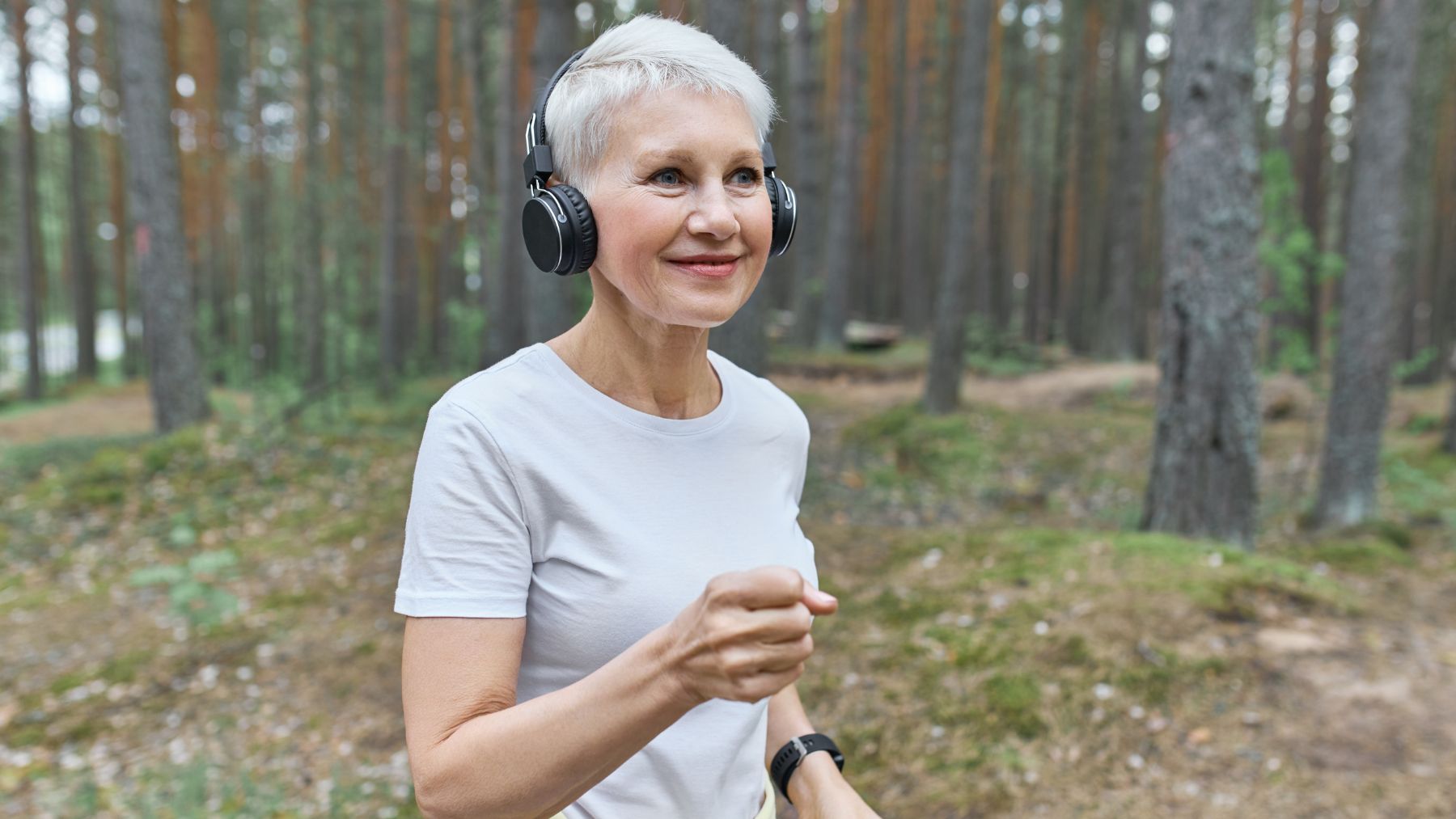While strength training often takes center stage in midlife, aerobic exercise is essential for women over 55. This type of movement—anything that raises your heart and breathing rates—keeps the cardiovascular system efficient as you age. Experts highlight that aerobic activity can help lower the risk of heart disease, insulin resistance, and bone density loss, while supporting overall longevity.
This becomes especially important during and after menopause, when estrogen levels naturally decline. Lower estrogen can stiffen blood vessels and impact cholesterol levels, raising cardiovascular risks. Regular aerobic activity can counterbalance these changes, keeping circulation strong and supporting long-term health.
How aerobic exercise benefits women over 55
A 2023 study published in the journal Circulation found that adults aged 50 with ideal cardiovascular health live on average 36.2 more years, compared to just 27.3 additional years for those with poor cardiovascular health.
Aerobic exercise doesn’t require extreme workouts to be effective. Whether you prefer walking, swimming, cycling, or dancing, consistent activity can help you move better, boost energy, and maintain heart health over time. Below are key recommendations from experts to get the most out of your routine safely and sustainably.
1. Accumulate weekly minutes in a way that works for you
The CDC advises at least 150 minutes of moderate-intensity aerobic activity weekly. “This is a minimum recommendation,” says Mark Kovacs, Ph.D. People who exercised two to four times more—about 300 to 599 minutes per week—experienced the most benefits, according to a 2022 Circulation study. That doesn’t mean you need marathon sessions. Walking 30 minutes five times a week or breaking it into three 10-minute bursts daily works too. Even shorter sessions count toward weekly goals.
2. Check your breathing to find the right pace
If you can speak but not sing while moving, you’re likely in the moderate zone. Moderate intensity usually feels like a five or six out of 10, while vigorous activity—like brisk uphill walking—should feel like a seven or eight, where conversation becomes harder.
3. Begin with joint-friendly cardio options
Walking on an incline, swimming, or using an elliptical are excellent ways to raise your heart rate without stressing the joints. As tendons and cartilage become less resilient with age, these options protect the joints while still challenging the heart and lungs.
4. Include short spurts of higher effort
Occasional faster intervals can deliver extra benefits, as long as your doctor clears you for higher effort. High-intensity interval training (HIIT) has been shown to improve insulin sensitivity, blood pressure, and cardiorespiratory fitness—key factors that often decline during menopause. Just two short HIIT sessions per week can be effective.
5. Switch up your routine to stay engaged
To avoid boredom, mix different types of aerobic activities, from hiking to Zumba or pickleball. Varying your routine challenges different muscles, lowers injury risk, and keeps motivation high.
6. Give your body time to recharge
As you get older, your body may need longer recovery times. Kovacs recommends 48 to 72 hours between more intense sessions, plus good sleep, proper nutrition, and gentle movement on rest days. If fatigue lingers for days, it may be time to scale back.
7. Take warm-ups seriously as you age
With lower estrogen levels, muscles and ligaments become stiffer, making warm-ups more crucial. Spend five to 10 minutes moving your joints through their full range—like inchworms, lunges with a twist, or bodyweight squats—to prepare for your workout.
8. Balance cardio with muscle-strengthening work
For the best results, pair aerobic activity with strength work. Aerobic exercise keeps your heart healthy, but you need strength training to keep your muscles and bones strong. Together, they create a solid foundation for healthy aging and long-term mobility.

